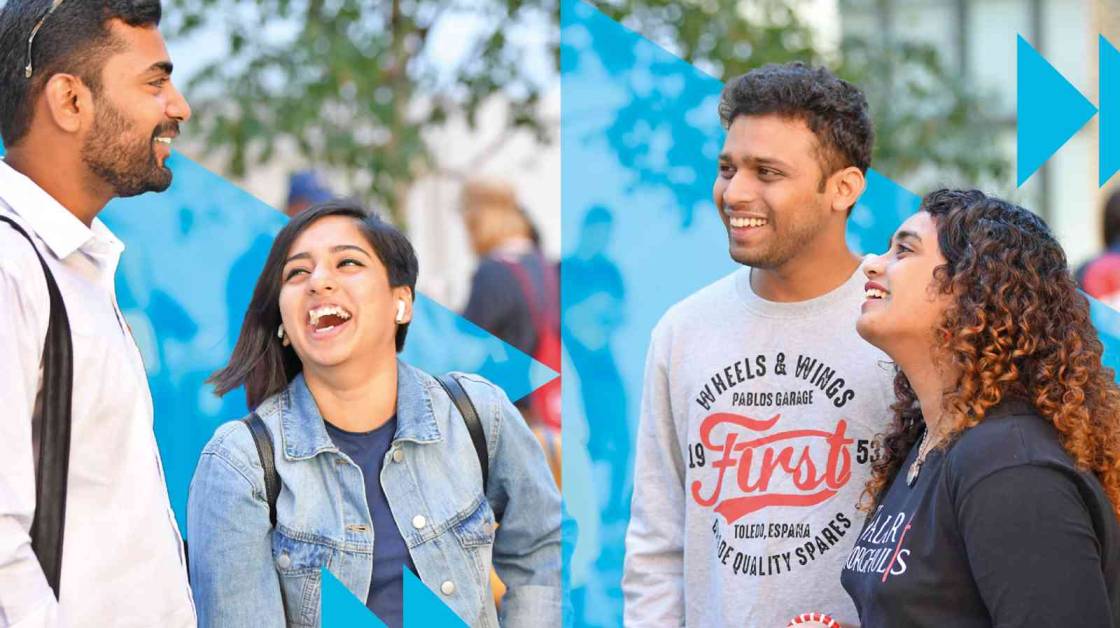Interaction Design BA (Hons)
Why choose this course?
The Interaction Design BA (Hons) course at Kingston School of Art is different for its focus on human experience, interaction, and immersive storytelling. Built around our world-leading facilities and expertise, this course engages the Digital Making Workshops and Immersive Lab, alongside analogue methods, to create and design interactions and experiences that explore urgent issues and experimental ideas though innovative technologies, creative responses, and critical speculative practices.
Interaction Design is uniquely located within the highly-regarded Department of Illustration Animation which has an excellent reputation for nurturing graduates who go on to be leading practitioners within their field. We are currently ranked No.1 in London and Top 5 in the UK for Graphic Design* in the Guardian League Tables 2023 (*covers Graphic Design and Illustration Animation).
Please note: this course is still subject to validation. Some course information may not be available at this time.
| Attendance | UCAS code | Year of entry |
|---|---|---|
| 3 years full time | W280 | 2025 |
Please note: this course is still subject to validation.
Please note: Teaching on this course may take place on more than one KU campus.
| Main location | Kingston School of Art, Knights Park |
Reasons to choose Kingston
- Interaction Design is uniquely located within the highly regarded Department of Illustration Animation which has an excellent reputation for nurturing graduates who go on to be leading practitioners within their field.
- We are currently ranked No.1 in London and Top 5 in the UK for Graphic Design* in the Guardian League Tables 2023
(*covers Graphic Design and Illustration Animation).
The Art School Experience
As part of Kingston School of Art, students on this course benefit from joining a creative community where collaborative working and critical practice are encouraged.
Our workshops and studios are open to all disciplines, enabling students and staff to work together, share ideas and explore multi-disciplinary making.

What you will study
Students are asked to generate and develop their own set of new and experimental practices through both digital and analogue forms. A diverse range of approaches will be taught and supported including immersive storytelling, extended reality, multi-media experiences, performance, spatial narrative, creative computing and games design. Through engaging with the most pressing societal issues, students will be supported in deepening creative and critical thinking through contextual studies, contemporary philosophy and decolonial design.
The course supports a deep understanding of individual and collective practice through set briefs, self-initiated and group work assignments. Students develop self-awareness and the ability to identify and advocate professional strengths through critical discourse and peer-to-peer interaction. Interdisciplinary collaborations and live projects with creative industries offer valuable professional experience through realising projects in context and applying skills in 'real-world' situations. Staff practitioners and alumni networks offer insight and contact with national and international opportunities through professional talks, studio visits and work placement.
Content for this course includes:
- Developing approaches to interpersonal and spatial storytelling.
- Using sensing, information capture and feedback response to engage with our surroundings and the needs of others.
- Understanding human action and behaviours through testing and contextualising ideas.
- Applying content and meaning to appropriate platforms and engage audiences.
- Critical thinking around digital and analogue technologies, craft, and methods of making.
Future Skills
Knowledge to give you the edge
Embedded within every course curriculum and throughout the whole Kingston experience, Future Skills will play a role in shaping you to become a future-proof graduate, providing you with the skills most valued by employers such as problem-solving, digital competency, and adaptability.
As you progress through your degree, you'll learn to navigate, explore and apply these graduate skills, learning to demonstrate and articulate to employers how future skills give you the edge.
At Kingston University, we're not just keeping up with change, we're creating it.

Entry requirements
Facilities
The course is taught at Kingston School of Art, one of the leading art and design institutions in Europe.
Our teaching is guided by two principles: that our students learn by the process of making; and that students are critical practitioners who contribute to the development of the subject areas.
Many of the staff in Kingston School of Art are current practitioners and have extensive experience and professional links, helping you to develop your skills, networks and gain access to industry contacts.
After you graduate
Students studying Interaction Design BA (Hons) can look forward to a broad range of professional opportunities and creative careers that include the following:
- Interaction Designer
- Exhibition Designer
- Experience Designer
- Production Designer
- Design Researcher
- Digital Designer
- Producer
- Project Manager
- Art Director
- Creative Director
- Immersive Storyteller
- Illustrator
- Animator
- Graphic Designer
- Games Designer
- Artist
- Performer
- Educator
- Community Outreach Facilitator.
Course changes and regulations
The information on this page reflects the currently intended course structure and module details. To improve your student experience and the quality of your degree, we may review and change the material information of this course. Course changes explained.
Programme Specifications for the course are published ahead of each academic year.
Regulations governing this course can be found on our website.



